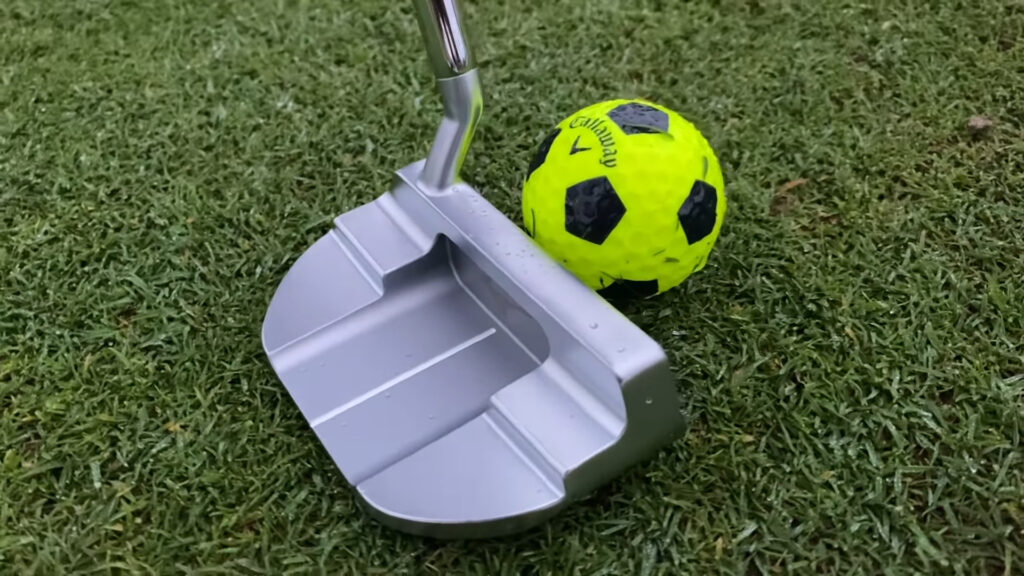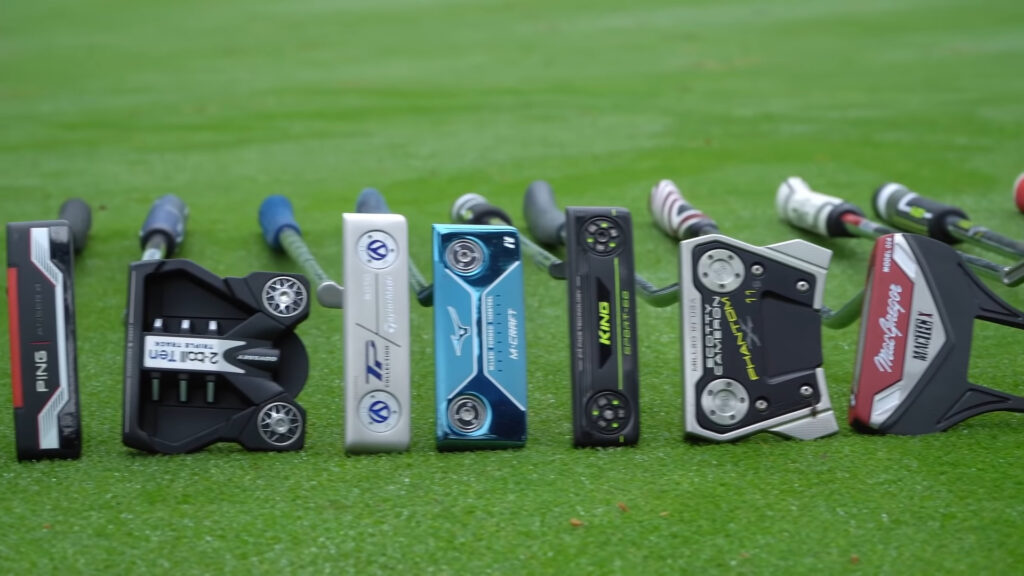How to Choose a Putter for Beginners?
Golf is a game that requires certain skills and tools to play with. A putter is an important part of your golf bag. It’s the club you use to sink that last critical putt, so it’s not something you should choose lightly. Some people call it a “stroke maker.” A putter is also called a short stick. Golf clubs are one of the key items for a golfer, and beginners are faced with the question of how to choose a putter for beginners of which clubs should be used in playing the game.
A beginner’s putter should also be balanced and lightweight to provide ease in swinging. If you’re new to the game of golf, consider a few things before selecting your first putter. Read on to learn about the best putter for beginners and how to decide which one is right for you!

Different Types – How To Choose a Putter for Beginners
To begin with, you will need to decide what type of putter you would like to use. Blade and Mallet putters are the two most common types.
Blade Putters
The blade style is the most popular option because it’s easier to control and offers more feedback than a mallet putter. A blade-style putter has a straight back, which is typically made from steel or aluminum, and a rounded sole that curves slightly upward at the toe. The face of the club is usually offset from the centerline of the shaft to create an open-face angle at the address.
Related Post: How To Hold Golf Driver?
Mallet Putters
A mallet-style putter has a larger head than a blade putter but still offers excellent control over distance and direction. These clubs are available in heel-toe weighted and center-balanced designs, which affect how they feel at impact. Mallets are typically heavier than blades, so they feel less “whippy” (more rigid) when struck with force and are more forgiving for a player who doesn’t hit the ball perfectly straight. The larger head size makes it easier to line up your putt, especially from long distances.
Types of Putter Grip
Since the grip is the only part of the putter that touches your hands and arms, it’s important to find one that you feel comfortable with. Here are some options:
Standard Grip – This is the most common type of putter grip, featuring a slightly larger-than-average butt end and smaller top end. Casual golfers usually prefer standard grips because they’re easy to hold and control throughout their swing.
V-shaped Grip – These grips feature a deep groove running down the centre of their rear ends and are popular among more advanced players who want more feedback as they swing through impact. V-shaped grips also provide better stability at impact, which helps prevent wrist breaks on off-centre strikes.
Finger-Grooved Grip – Finger grooves help keep your fingers in place on the shaft during your stroke, allowing you to control how much pressure you apply during contact with the ball.
How To Choose The Right Putter?
Finding the right putter and knowing the best answer to the question of how to choose a putter for beginners for your game is very important when you are just starting out. Regardless of how good your short game is, it doesn’t matter if you can’t put the ball in the hole. Putter fitting is all about finding a club that works with your stroke. You don’t have to be an expert at putting to find the right putter for your game.

Size
In choosing a new golf club, you should take the size of your putter into consideration. Putters can be classified as blades or mallets. Blade putters are shorter and wider than mallets. They tend to be more forgiving but require more precision from the golfer. Mallets are longer and skinnier than blades, requiring less precision and forgiveness.
Shaft Length
The length of the shaft on your putter plays an important role in how well you’ll be able to control it during your stroke. Shorter shafts tend to be easier for beginners because they take less time to swing through their arc, making it easier to stay online during their follow-through. Longer shafts are more difficult to control because they take longer to swing through their arcs, but they’re also more forgiving since they have more mass behind them. A shorter putter might be your best bet if you’re just starting out with golf.
Shaft Shape
The shape of the shaft on your putter is another important variable that can affect how well it performs for you. Round shafts tend to be easier for beginners because they don’t require as much precision from the putter’s head to strike the ball. A round shaft is also better for people with less hand strength because it’s easier to hold onto, and it allows them to position their hands more naturally in relation to their shoulders. A square or rectangular shaft is much harder for beginners because it requires more precision from the putter head.
Loft
The club’s loft will affect how far the ball will travel after the face of the club head strikes it. A higher lofted putter will result in more backspin on your shot, which will help it roll further along its intended path. A lower lofted putter won’t have as much backspin but will still give you plenty of distance from your shot.
Head Weight
The weight of your putter head affects how much momentum it takes to get the ball rolling towards the hole after impact with the ball. If you have a heavy head, it will take more effort and force to get the ball moving forward after impact with the golf ball. If you have a light head, it won’t take as much effort or force to get the ball moving forward after impact with the golf ball. The weight of your putter head also affects how much backspin you’ll get on your shot. A heavy putter head will have more momentum and will create more backspin than a light putter head.
Head Type
The most common type of putter head is called a blade. It has no heel-toe weighting and is designed to be square with the face of the club. The idea is that by making it as square as possible to the face, you can keep your eyes over the ball longer and aim more precisely. A blade also has a larger sweet spot than a mallet or cavity back head, which means it will be more forgiving if you don’t hit it perfectly.
A lot of people also like to use belly putters because they require you to keep your wrists straight through impact, which helps prevent wrist breaks in your stroke that can cause missed short putts. However, belly putters are banned in professional golf, so they aren’t recommended for recreational players. If you want to try one out, make sure to get fitted by a professional before buying one so that you have a proper fit in mind when choosing a model.
Related Post: How to Fix a Driver Hook
Handles and Grips
The main thing you’ll want to consider when buying a putter is how it feels in your hands. Some putters come with high-quality grips that feel soft and comfortable, while others are wrapped in mesh or leather. Traditional cord-style grips are also available if you’re looking for something more traditional. You should choose an item that you are comfortable with so that your stroke will not be affected.
Materials Used for Construction
Another important consideration is the material used to construct your putter head and shafts. Aluminum is a popular choice because it’s lightweight, but many golfers prefer stainless steel because it offers more stability and control when making contact with the ball. If you’re just starting out with golf or haven’t played in a while, an aluminum option might be best for you until you get used to swinging again. Stainless steel may be the better option if you’ve been playing for a while and are comfortable with your stroke.

Final Words
Hopefully, you now feel more confident in choosing a putter that is right for you! Make a smart investment by keeping these guidelines in mind. Let’s discuss the answer to the question of how to choose a putter for beginners, you should consider choosing a golf putter with a higher loft. This will help to give your ball more backspin. Backspin will increase the roll rate of the ball, which is what you want on the putting greens. That extra backspin will help your ball go that extra little bit further.
FAQs
What type of putter should a beginner use?
We recommend going with an oversized mallet putter if you’re just starting out. These are very easy to hit and tend to be the most forgiving. They also give you a bit more confidence when putting, which is important for beginner golfers.
What is the easiest putter to hit?
The easiest way to hit a putt is by lining up your eyes directly over the ball at impact and then keeping your head still during the stroke. While this may sound simple, it’s very difficult to do when you start out. A simpler design, like a mallet-style putter, will help you build confidence while learning the proper technique.
What type of putter is most forgiving?
Oversized mallets will be the most forgiving option for beginners because they have larger heads and larger blades that help prevent mis-hits from flying off target dramatically. However, blade-style designs can also be forgiving because their large faces help mitigate mishits.
What is the difference between a putter and a driver?
The most important difference is that drivers are designed to travel further, while putters are designed to hit straight and accurately. The other difference is that drivers have lofts greater than 60 degrees, while putters have less than 60 degrees.

he blog was how do i say it… relevant, finally something that helped me. Thanks
Wow, great article post.Really looking forward to read more. Cool.